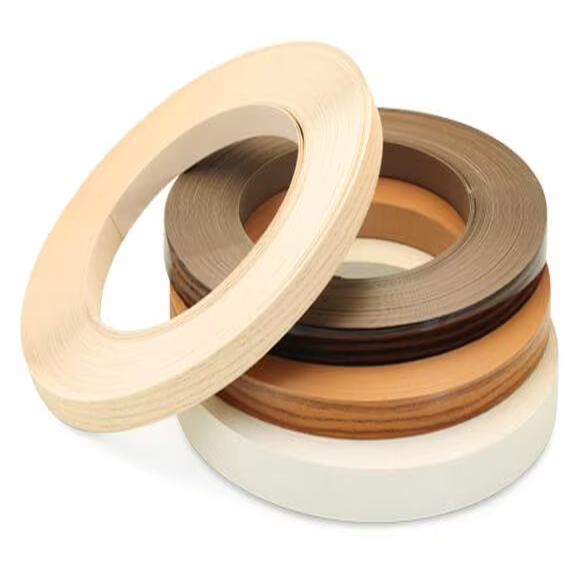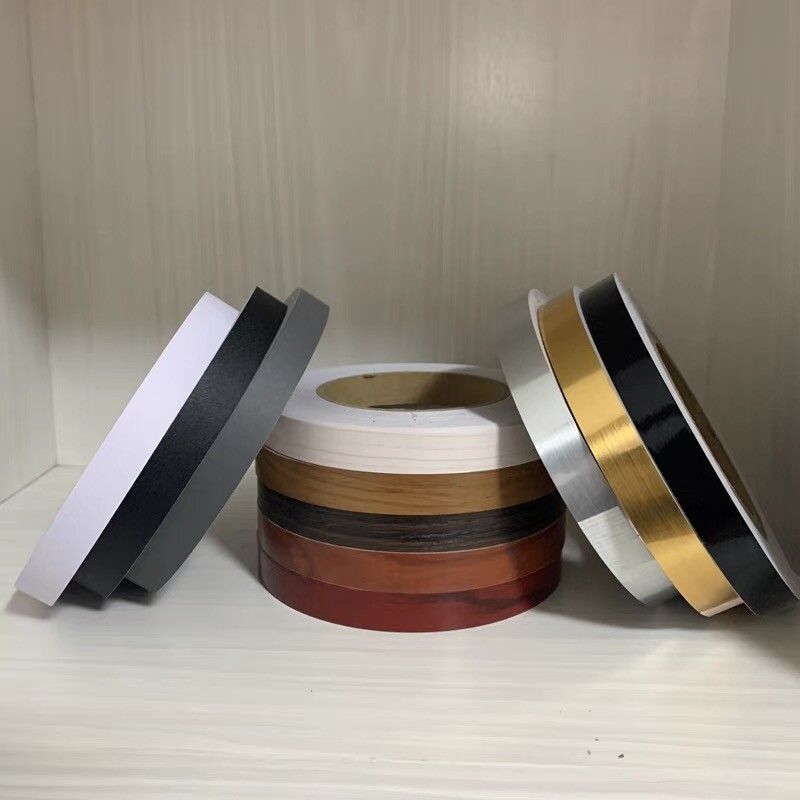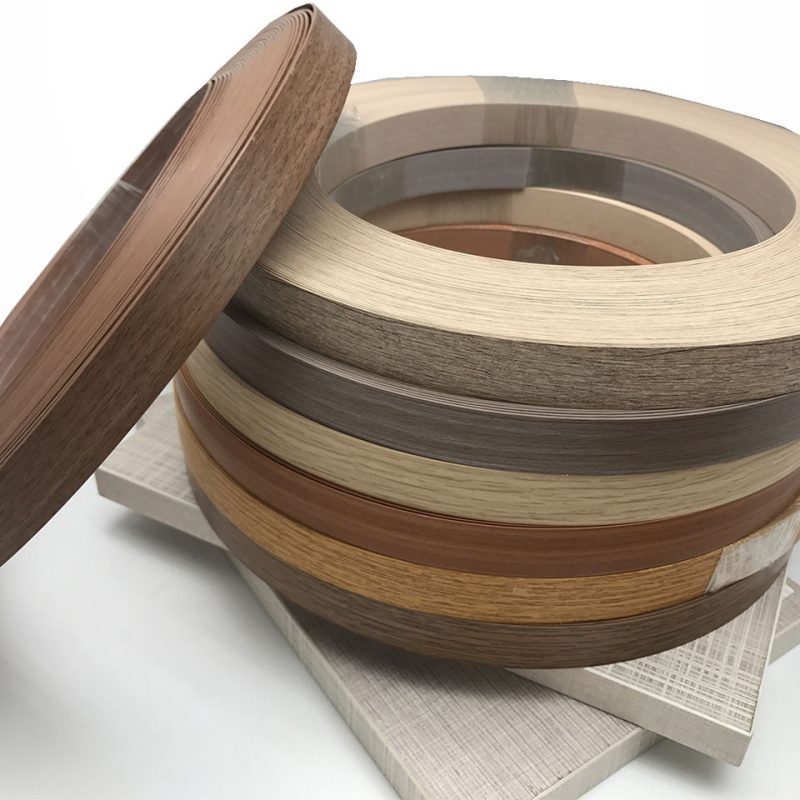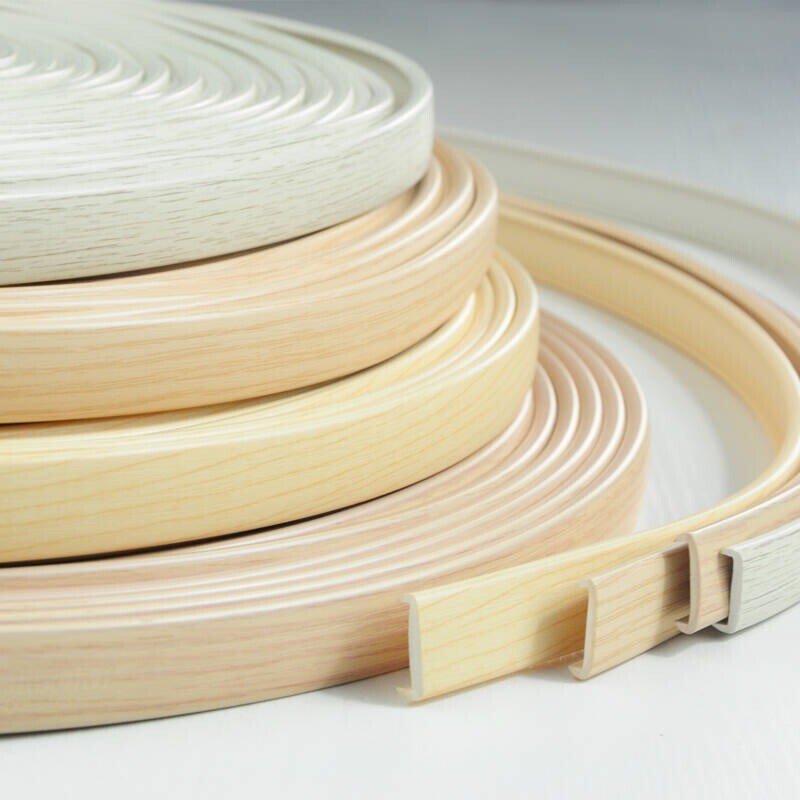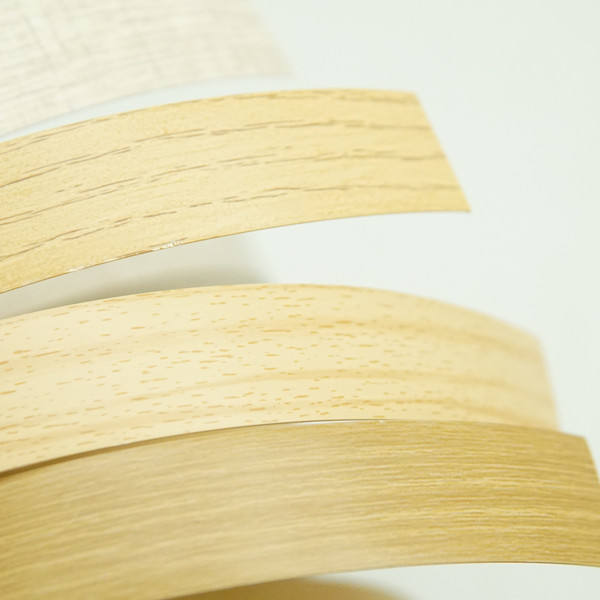We specialize in providing comprehensive furniture solutions, offering both ODM and OEM services.
News
The production technology of PVC edge banding mainly includes the following key links:
Raw material preparation:
1.PVC resin: Usually, suspension method polyvinyl chloride resin is selected. Different models are chosen according to the performance requirements of the product, such as SG-5 and SG-6 types, etc.
It has excellent processing performance and mechanical properties.
2. Plasticizers: Commonly used ones include dioctyl phthalate (DOP) and dibutyl phthalate (DBP), which can enhance the flexibility and plasticity of PVC, reduce its hardness and melting point.
3. Stabilizers: To prevent PVC from decomposing due to factors such as heat and light during processing and use, stabilizers such as lead salts, organotin, calcium-zinc, etc. need to be added.
4. Lubricants: Generally, there are stearic acid, calcium stearate, paraffin, etc., which can improve the fluidity of PVC melt, prevent it from adhering to the surface of equipment during processing,
and enhance the surface quality of the product.
5. Fillers: Commonly used fillers include calcium carbonate, talcum powder, etc., which can reduce production costs and enhance the hardness, dimensional stability and other properties of the
product. However, the addition amount should not be excessive, otherwise it will affect the flexibility and processing performance of the product.
6. Pigments: Add various pigments as needed to obtain edge banding strips of different colors.
Formula design:
The formula of PVC edge banding strips needs to be optimized based on factors such as the product's usage requirements, performance characteristics, and processing techniques. Generally speaking,
the content of PVC resin in the basic formula is about 100 parts. The amount of plasticizer is between 30 and 80 parts depending on the softness requirement of the product. The amount of stabilizer is
about 3 to 5 parts. The amount of lubricant is about 1 to 3 parts. The amount of filler can be appropriately adjusted between 10 and 50 parts according to the cost and performance requirements.
Production process:
1. Mixing: Add PVC resin, plasticizer, stabilizer, lubricant, filler, pigment, etc. in accordance with the formula proportion to the high-speed mixer for thorough mixing. When mixing, first stir at a low speed
to initially mix all components evenly, then gradually increase the speed to ensure that the materials are fully mixed and heated under high-speed stirring. Generally, the mixing temperature is controlled
at around 100-120 ℃, and the mixing time is 10-15 minutes.
2. Extrusion: The well-mixed materials enter the extruder barrel through the feed port of the extruder. Under the rotation and push of the screw, the materials are gradually compacted and plasticized
inside the barrel. The temperature control of an extruder is extremely crucial. Generally, the temperature gradually increases from the feed section to the die head. Usually, the temperature in the feed
section is controlled at 120-140 ℃, in the compression section at 160-180 ℃, in the metering section at 180-200 ℃, and in the die head at 190-210 ℃. By adjusting the screw speed and temperature, the
material can reach a good plasticizing state in the extruder and be extruded from the die head at a stable flow rate.
3. Molding: The PVC melt extruded from the extruder head is formed through a specific mold. The shape and size of the mold determine the cross-sectional shape and specification of the edge banding
strip. The common cross-sectional shapes of edge banding strips include right-angle type, beveled type, rounded corner type, etc. During the forming process, in order to ensure the dimensional accuracy
and surface quality of the edge banding strip, precise design and processing of the mold are required, and the forming process parameters, such as mold temperature and extrusion speed, must be strictly
controlled. The general mold temperature is controlled at around 40 to 60 degrees Celsius.
4. Traction: The formed edge banding strip is pulled by a traction device. The traction speed should be matched with the extrusion speed to ensure the length and dimensional stability of the edge banding
strip. The traction speed is generally between 5 and 20 meters per minute, which can be adjusted according to the thickness and width of the edge banding.
5. Cooling: During the traction process, the edge banding needs to be cooled and shaped through a cooling device. The commonly used cooling methods include air cooling and water cooling. Air cooling
is achieved by blowing cold air towards the edge banding through a fan, causing its surface temperature to drop rapidly. Water cooling involves cooling the edge banding through a water tank, which has
a better cooling effect. However, it is necessary to pay attention to controlling the water temperature to avoid internal stress in the edge banding due to rapid cooling. The temperature of the edge banding
after cooling should be reduced to about room temperature.
6. Cutting: The cooled edge banding strips are cut to a fixed length according to the user's requirements, with the cutting length generally ranging from 2 to 5 meters. Cutting equipment usually adopts
automatic cutting machines. By setting the cutting length and cutting speed, precise cutting of edge banding strips can be achieved.
7. Packaging: After the cut edge banding strips pass the inspection, they are packaged. The packaging method generally adopts plastic film packaging or paper box packaging to prevent the edge banding
from being damaged and contaminated during transportation and storage.
Quality Control:
1. Appearance quality: Mainly check whether the surface of the edge banding is smooth and flat, and whether there are any defects such as bubbles, cracks, material shortages, and burrs. Also, check if the
color is uniform and consistent, and whether there is any color difference.
2. Dimensional accuracy: Measure whether the width, thickness, length and other dimensions of the edge banding strip meet the product specification requirements. The dimensional deviation should be
controlled within the allowable range. The width deviation of the general edge banding strip is controlled within ±0.2mm, and the thickness deviation is controlled within ±0.1mm.
3. Physical properties: Test the physical performance indicators of the edge banding strips, such as hardness, flexibility, tensile strength, and elongation at break. Hardness is generally measured by a
Shore hardness tester. Depending on the product requirements, the hardness value is usually between 60 and 90. The tensile strength should be no less than 15MPa, and the elongation at break should
be no less than 150%.
5. Chemical properties: Check the chemical resistance, weather resistance and other chemical properties of the edge banding. The chemical corrosion resistance of the edge banding was evaluated by
immersing it in different chemical reagents, observing its surface changes and performance changes. The performance stability of the edge banding strips under long-term environmental conditions
such as light, high temperature and humidity is detected through artificial accelerated aging tests or natural exposure tests, and their weather resistance is evaluated.
Latest articles
 The excellent performance of edge-sealed plywood2025-05-23
The excellent performance of edge-sealed plywood2025-05-23 Personal DIY Plywood Edge Banding Guide2025-05-23
Personal DIY Plywood Edge Banding Guide2025-05-23 What are the similarities and differences between laser edge banding and ordinary edge banding?2025-05-22
What are the similarities and differences between laser edge banding and ordinary edge banding?2025-05-22 The manufacturing process and differences of edge banding strips2025-05-22
The manufacturing process and differences of edge banding strips2025-05-22 What Is PVC Edge Banding?2025-05-22
What Is PVC Edge Banding?2025-05-22
Ask For A Quick Quote
If you are looking for more information on our services, or how we could potentially help, we would love to hear from you!

